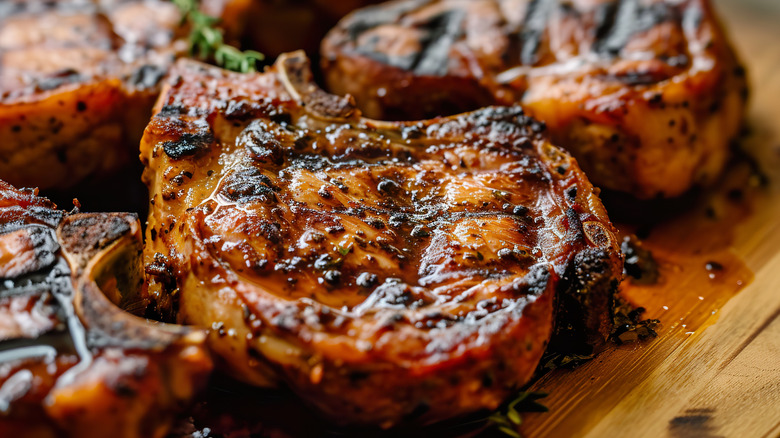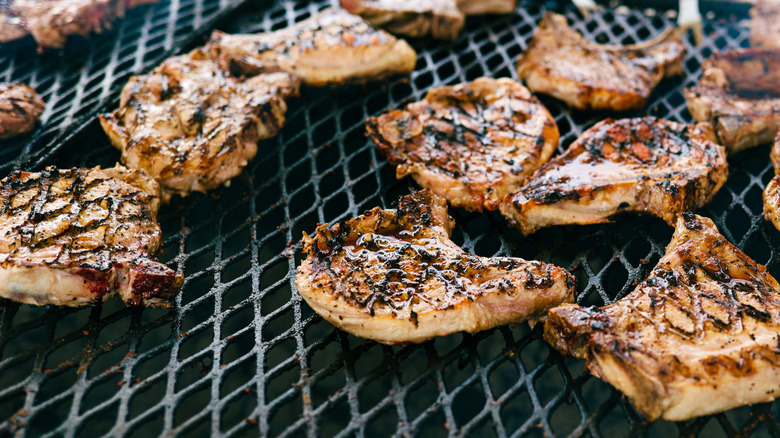Here's How Long You Should Grill Thin Pork Chops For Juicy Results
Thin pork chops are a barbecue essential: They're affordable, cook quickly, and are packed full of flavor. The ideal thin pork chop is around ⅛ to ¼ inch thick; when grilled, it should be brown and caramelized on the outside while tender and juicy on the inside. Because they're so lean, getting a perfectly grilled pork chop is all down to the timing. Get it right and there's a succulent and juicy bite, but overcook them and you end up with burnt, bone-dry chops.
Thin pork chops can require a little more immediate attention than other barbecue classics. For quick cooking, get your grill to a medium-high heat, around 375 to 400 degrees Fahrenheit. Slather on your marinade (root beer is a game-changer for pork chops) and slap your pork chops on the grill. Because they're so thin, a trick is to only cook them on one side — not flipping the chops gives them the maximum amount of time to develop that lovely caramelized char (and the flavor it brings) while ensuring you don't risk overcooking them. After four minutes, if you don't think your chops are fully cooked, you can flip and grill them for another minute. When they're done, let them rest for five to 10 minutes before serving to ensure your meat is as juicy as possible.
Other tips for making thin, juicy pork chops
Achieving juicy, perfectly cooked pork chops means keeping a close eye on the internal temperature you should cook pork chops at: 145 degrees Fahrenheit. This leaves them at a nice medium-rare; any hotter would be dry and overdone. Use a probe thermometer for an instant, accurate reading. Another prep trick to ensure your pork chops are juicy all the way through is to brine the meat before cooking, which helps the meat retain moisture while it cooks, tenderizes it, and helps achieve a mouthwatering texture — even in the thinnest of pork chops.
Choosing the right cut can also make all the difference. Bone-in pork chops, for example, usually end up more juicy than boneless chops because bone acts as a natural insulator. This prevents overcooking since it takes longer to heat up than the meat, allowing for a more even heat distribution and stopping your pork chop from drying out. The bone also contains fat and collagen that melt during cooking, infusing your pork chop with moisture and flavor. You also want pork chops to have a bit of marbling, which is fat interspersed with the muscle tissue that renders out slowly during grilling. The slow rendering retains moisture and significantly contributes to the juiciness, texture, and overall flavor, so keep an eye out to set yourself up for success.

